Golden Ratio Spritivity Projects at Stoke Newington School, London
The Golden Ratio (φ) is approximately equal to;
1.61803 39887 49894 84820 45868 34365 63811 77203 09179 80576 ....
but is often shortened to 1.618, just as pi is shortened to 3.145.
The Golden Ratio is a fascinating number which appears everywhere from nature to art. The "Golden Rectangle" is a rectangle whose length and height is determined by the "Golden Ratio". It is deemed to be the most aesthetically pleasing rectangle possible.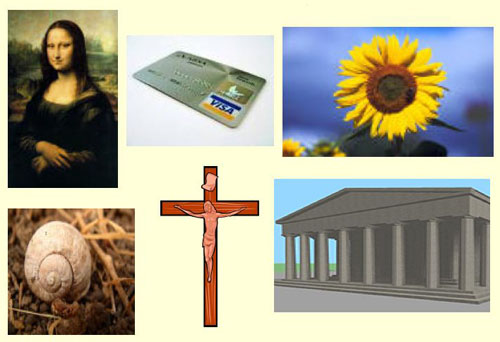
Instantiations of the Golden Ratio in art, design, nature, religious symbolism and architecture
A group of 11 and 12 year-old students, from Stoke Newington Secondary School Year 7 Mathematics class, decided to develop projects which explore instantiations of the golden ratio, and the golden rectangle, in range of specific contexts in artefacts displayed in the British Museum, and in the architecture of the British Museum itself.
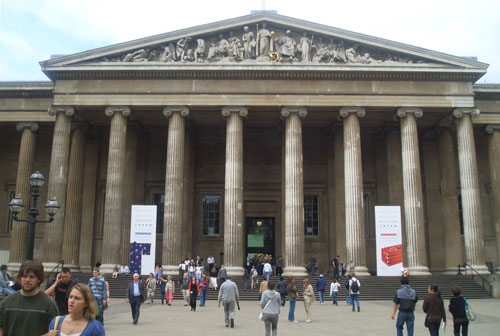
The British Museum, established by an Act of Parliament on 7 June 1753, celebrated its 250th anniversary in 2003. It holds in trust for the nation and the world a collection of artefacts (art and antiquities) from ancient and living cultures, housed in one of Britain's architectural landmarks. The British Museum's collection is one of the finest in existence, spanning two million years of human history.
The fundamental grounding of the artefacts that the class of Stoke Newington School students explored in their visit to the British Museum was physical and structural, so the students could photgraph or video them.
However, the students could also expore other kinds of groundings – Aesthetic, Functional, Cultural/Social and Historical – in the specific context of each artefact, This exploration provided an oppotuntiy for the students to learn about many cultures of the world, including that of China. They could also use Spritivity concepts to make their own creative interpretions of these instantiations and their groundings through the media of posters, PowerPoint presentations and movies.
The schedule for the development of these projects had four stages: The frist three stages were in June 2007, the fourth stage was in September 2007.
In stage 1, students were introduced introduced to the concepts of symmetry and the golden ratio (GR) by their mathematics teacher, with the aid of a PowerPoint presentation. They found out about the occurrence of the golden ratio in the nature, the human body, in arts and in architecture.
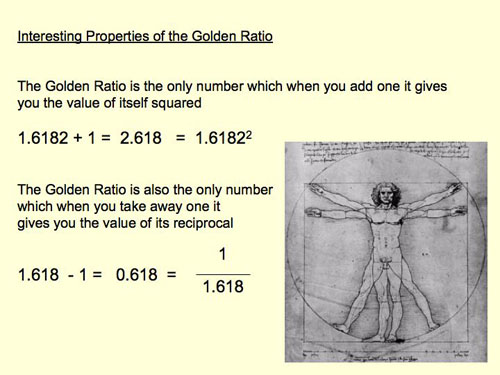
Click here to download the mathematics teacher’s PowerPoint presentation on the Golden Ratio
In Stage 2, Twenty-nine students and four teachers form Stoke Newington School made a one day visit to the British Museum. Upon arrival, they split into four groups.
Each group was equipped with digital cameras and a video-camera in order to take pictures and to record the features of the building and of the artefacts on display that they thought contained instantiations of the golden ratio.
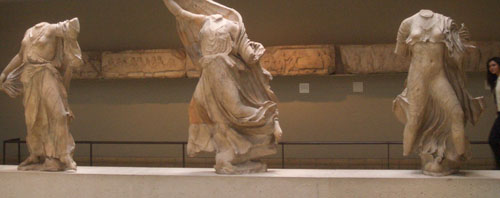
View pictures of architecture and artefacts taken by the students
The students visited the Museum's galleries containing artefacts from Greece and the Roman Empire, the Middle East, China and Asia.. They took photos and video-recorded their experiences as part of the videodiary they were keeping on their projects
View a video made by a group of students about their visit
In Stage 3, each of the four groups of students created a poster on the Golden Ratio for display within Stoke Newington School displays. They used, as resources for this work, a selection of pictures, drawings and other information, including some of the pictures they had taken during their visit to the British Museum.
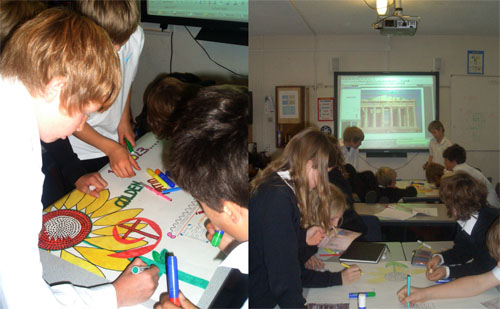
Making posters
View the poster-making process
In Stage 4, each group of students made a PowerPoint presentation of the results of their work on instantiations of the golden ratio in artefacts displayed in the British Museum, and in the architecture of the British Museum.
T